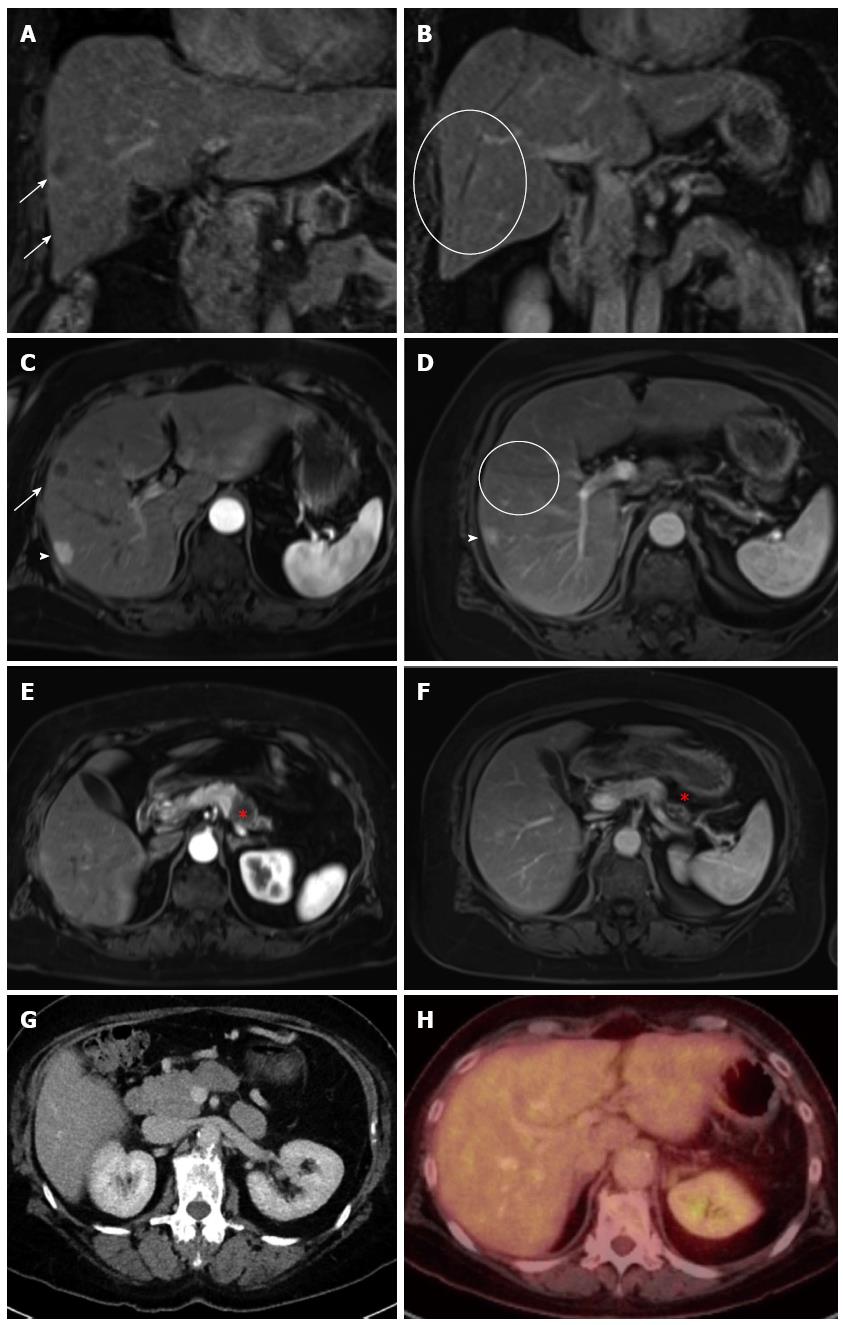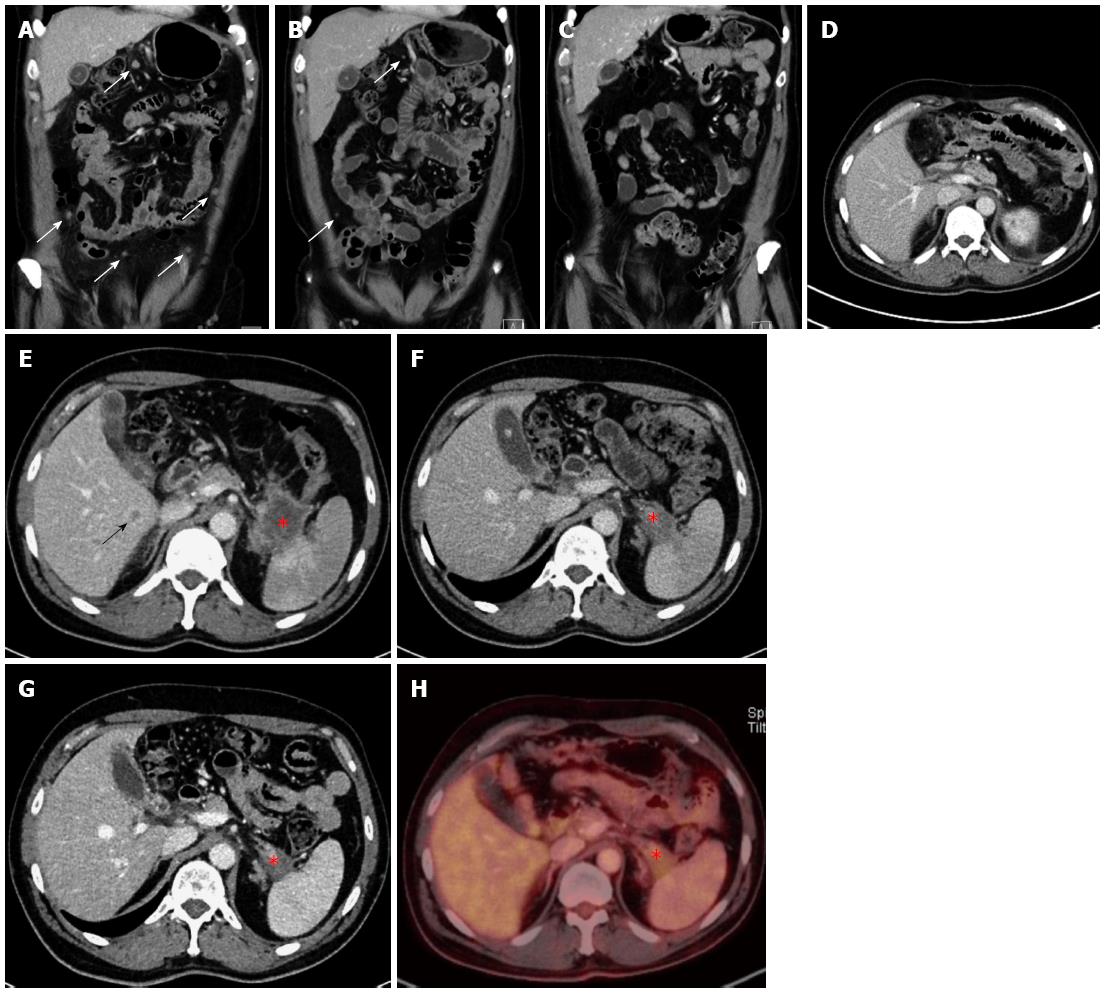Copyright
©The Author(s) 2015.
World J Gastroenterol. May 28, 2015; 21(20): 6384-6390
Published online May 28, 2015. doi: 10.3748/wjg.v21.i20.6384
Published online May 28, 2015. doi: 10.3748/wjg.v21.i20.6384
Figure 1 Computed tomography, magnetic resonance imaging and positron emission tomography images of patient 1.
Coronal (A, B) and transversal (C-F) T1w contrast-enhanced MRI images demonstrated regredient primary malignancy (star) in the tail of pancreas (E, F) and regredient hepatic metastases (arrow, cycle) in the right liver lobe (A, B, C, D). An additional hemangioma (arrowhead) was observed. Postoperative CT (G) and PET-CT (H) showed complete resection of the primary tumor and no visible metastasis. CT: Computed tomography; MRI: Magnetic resonance imaging; PET: Positron emission tomography.
Figure 2 Resected carcinoma of the pancreas after neoadjuvant treatment from patient 1 (A) and patient 2 (B).
Hematoxylin and eosin-stained sections are shown. A: 200 × magnification; B: 100 × magnification. Tumor tissue is indicated by the solid arrow and the perineurium is indicated by the dotted arrow.
Figure 3 Computed tomography and positron emission tomography images of patient 2.
Coronal (A, B, C) contrast-enhanced CT images demonstrated complete regression of multiple peritoneal metastases (white arrow). Axial CT images (E, F, G) and PET-CT image (H) show a regredient mass (star) in the tail of the pancreas. Liver metastasis (black arrow) was seen only in the initial CT-examination (E). Post-operative CT (D) showed complete resection of the primary tumor in the pancreatic tail and no visible metastases. CT: Computed tomography; PET: Positron emission tomography.
- Citation: Schneitler S, Kröpil P, Riemer J, Antoch G, Knoefel WT, Häussinger D, Graf D. Metastasized pancreatic carcinoma with neoadjuvant FOLFIRINOX therapy and R0 resection. World J Gastroenterol 2015; 21(20): 6384-6390
- URL: https://www.wjgnet.com/1007-9327/full/v21/i20/6384.htm
- DOI: https://dx.doi.org/10.3748/wjg.v21.i20.6384











